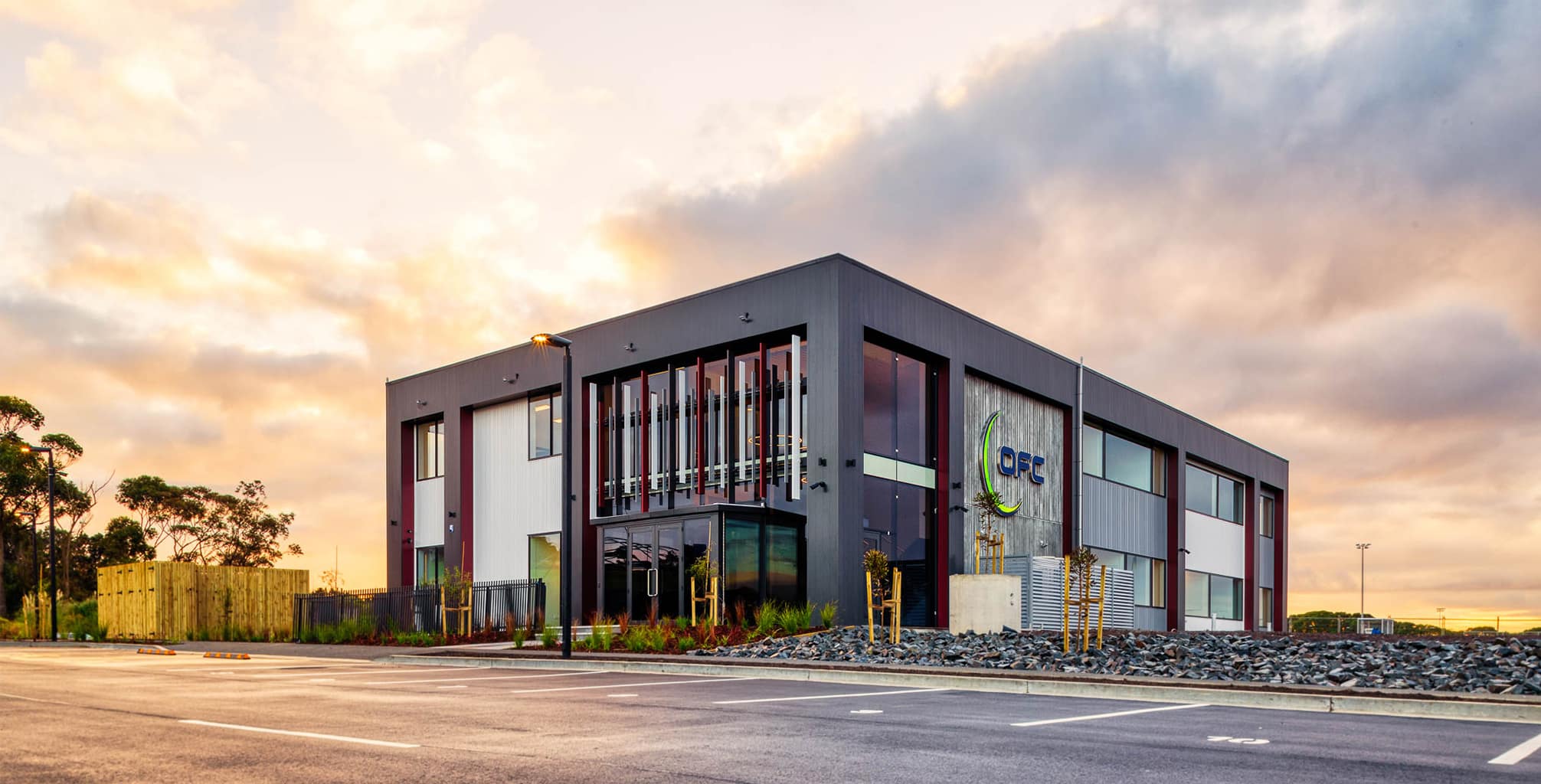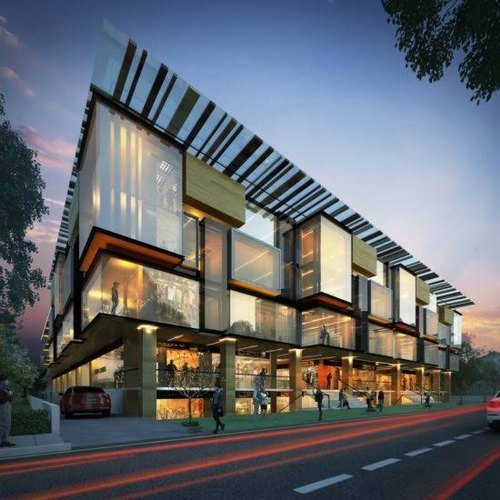Discover the Ingenious Services Provided by Commercial Architects for Your Following Task
Commercial architects play a vital duty fit the built setting. They mix performance with visual allure, developing spaces that resonate with brand identification. These specialists utilize cutting-edge style services, sustainable practices, and advanced modern technologies to improve user experiences. Their joint technique guarantees positioning with client visions and operational needs. Nonetheless, the degree of their services commonly extends beyond style. The following action in comprehending how these architects navigate intricate job demands might stun you.
Comprehending the Role of Commercial Architects
The role of business architects might differ depending on the particular job, their key feature revolves around designing useful and aesthetically appealing areas for services. These specialists are entrusted with understanding the one-of-a-kind needs of each client, whether it be a retail shop, office complex, or industrial center. They conduct extensive site evaluations and team up with stakeholders to guarantee that the style straightens with business purposes and brand identity.Commercial architects likewise browse numerous governing requirements, safeguarding conformity with zoning laws and building regulations. Their knowledge includes developing lasting layouts that promote energy efficiency and environmental responsibility. Furthermore, they manage the job's timeline and budget plan, collaborating with professionals and designers throughout the building and construction process. By blending creativity with technical understanding, commercial architects play an essential role in transforming theoretical ideas into tangible facts, ultimately enhancing the capability and allure of business areas.
Innovative Layout Solutions for One-of-a-kind Rooms
As business areas significantly require distinctiveness to stick out in open markets, cutting-edge layout options have ended up being important for architects. These specialists take advantage of their creativity and technical competence to craft one-of-a-kind settings that mirror brand name identification and enhance user experience. By integrating advanced innovation and materials, industrial architects can change ordinary areas right into charming venues that engage customers and influence employees.Architects employ numerous methods, such as flexible reuse, which renews existing frameworks while protecting their historic relevance. They additionally explore unique designs and multifunctional spaces that accommodate diverse requirements, making sure adaptability for future growth.Furthermore, the incorporation of biophilic design-- bringing nature indoors-- creates welcoming atmospheres that promote well-being - commercial architects. This interest to information in cutting-edge style not only addresses visual issues yet additionally promotes neighborhood and collaboration. Ultimately, these tailored options enable services to thrive in an ever-evolving landscape, establishing them aside from competitors
Sustainable Architecture Practices
Sustainable architecture methods have become a critical focus for commercial architects looking for to develop impactful styles that reverberate with ecological stewardship. These techniques focus on making use of renewable energies, energy performance, and very little waste, mirroring a commitment to lowering the environmental footprint of structures. Architects include materials that are sustainably sourced or reused, ensuring that building approaches line up with environmental principles.Furthermore, the assimilation of eco-friendly roof coverings and wall surfaces boosts biodiversity while enhancing energy performance. Reliable water management systems, such as rain harvesting, add to sustainability by conserving water sources. Natural ventilation and daylighting strategies are also used to optimize indoor atmospheres, reducing reliance on synthetic heating and lights.
Integrating Technology in Architectural Designs
An increasing variety of commercial architects are welcoming technology as a transformative component in building design. By leveraging sophisticated software application devices such as Building Information Modeling (BIM), architects can create detailed 3D representations of projects, enabling enhanced visualization and collaboration among stakeholders. This technology promotes real-time changes, decreasing errors and simplifying the design process.Additionally, architects are integrating clever structure modern technologies into their styles, which improve energy performance and owner convenience. Attributes such as automated lighting, environment control, and safety and security systems can be effortlessly incorporated, advertising sustainable practices and reducing operational costs.The use of online and increased truth also enables customers to experience layouts prior to building and construction begins, offering indispensable insights right into spatial relationships and aesthetic choices. Eventually, the integration of innovation in building layouts not only promotes advancement yet also guarantees that tasks are carried out with accuracy and straightened with modern demands.

Job Administration and Sychronisation Solutions
Efficient project monitoring and coordination services are important for the successful execution of business building tasks. These solutions guarantee that all aspects of a project, from initial design to final building and construction, are perfectly integrated. Commercial architects play a significant role in working with between different stakeholders, consisting of customers, professionals, and distributors, to maintain clear communication and positioning on project goals.By executing structured techniques, architects can take care of timelines, spending plans, and sources efficiently, lessening hold-ups and expense overruns. They utilize job management software program and tools to track development, take care of documents, and promote partnership among group members.Additionally, these solutions include threat additional reading analysis and reduction techniques, confirming possible difficulties are determined and resolved proactively. The outcome is a structured procedure that enhances total job effectiveness and quality, eventually resulting in an effective outcome that satisfies the client's vision and assumptions.
Regulatory Conformity and Zoning Help
Effective regulative conformity and zoning assistance are necessary for the success of any kind of business task. Architects should possess a deep understanding of neighborhood guidelines and zoning laws to guide clients via the complexities of the authorization process. This expertise not only guarantees adherence to lawful requirements but additionally aids enhance task design and functionality.
Browsing Local Regulations
How can business architects guarantee their designs align with local laws? By remaining well-informed about the ever-evolving landscape of building codes and regional ordinances, architects play a crucial function in guaranteeing compliance. They perform detailed research to understand the particular regulations governing materials, safety and security standards, and building methods appropriate to each job. Collaborating carefully with local authorities, industrial architects can maneuver through the complexities of regulative frameworks effectively. They additionally facilitate required permits and examinations, enhancing the approval procedure. This proactive approach not only alleviates prospective legal difficulties but additionally enhances project performance. Ultimately, their experience in navigating neighborhood regulations equips customers to realize their vision while sticking to all required standards and standards.
Zoning Law Experience
Zoning regulation proficiency is vital for commercial architects steering through the complexities of land usage regulations. These architects have in-depth expertise of local zoning codes, which regulate building development, land use, and building requirements. By comprehending these regulations, they help customers navigate the usually detailed approval processes needed for building jobs. Their expertise warranties conformity with zoning laws, minimizing the threat of task hold-ups or lawful complications.Additionally, industrial architects give valuable help in obtaining required licenses and differences, facilitating smoother interactions with neighborhood authorities. They also supply calculated recommendations to optimize site format and maximize the possibility of a residential property while sticking to zoning constraints. Eventually, their zoning law efficiency plays a critical role in the effective understanding of industrial projects.
Collaborative Approaches With Clients and Stakeholders
Successful commercial style depends upon the ability to promote solid cooperation with customers and stakeholders throughout the layout process - commercial architects. Architects engage in open dialogues, ensuring that all parties' visions and requirements are incorporated right into the project. This joint strategy begins in the preliminary phases, where architects carry out workshops and brainstorming sessions, enabling clients to express their goals and concerns.Stakeholder input is similarly vital; architects typically arrange conferences with area members, city governments, and various other relevant entities to collect diverse point of views. By using visualization tools, such as 3D modeling, architects facilitate far better understanding and communication.This iterative responses process not only improves layout quality but likewise constructs trust, bring about even more successful end results. Inevitably, the joint ideology of commercial architects transforms ideas right into functional rooms that show the desires of clients and the broader community, guaranteeing a harmonious connection throughout the project lifecycle

Frequently Asked Inquiries
What Is the Normal Timeline for an Industrial Architecture Project?
The normal timeline for an industrial style job differs, generally covering 6 to 18 months. Elements influencing this duration consist of job intricacy, governing authorizations, and client commercial architects responsiveness, influencing each phase from style to construction completion.
Exactly How Do Commercial Architects Fee for Their Providers?
Commercial architects normally bill based upon task extent, complexity, and size. Common fee structures consist of hourly rates, fixed costs, or percentage-based costs computed from the total building cost, making certain transparency and alignment with client expectations.
Can Commercial Architects Help With Interior Decoration?
Commercial architects can certainly help with indoor layout, integrating performance and visual appeals. Their proficiency guarantees natural areas that align with architectural vision, improving customer experience while fulfilling regulatory needs and customer purposes with ingenious layout options.
What Sorts of Clients Do Commercial Architects Typically Deal With?
Commercial architects usually collaborate with varied customers, including organizations, government entities, academic institutions, and non-profit organizations (commercial architects). Each customer looks for customized building options to satisfy particular useful and aesthetic needs for their tasks and environments
Just How Do Commercial Architects Remain Upgraded With Design Trends?
Commercial architects stay upgraded with design fads through constant education and learning, attending market my site meetings, taking part in specialist networks, and looking into emerging modern technologies. They likewise collaborate with various other specialists to get insights right into ingenious materials and layout methods.